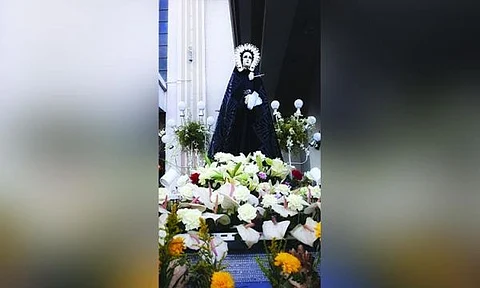

Have you seen the carrozas of saints line up the open space in front of the church as the religious faithful hear mass prior to the solemn foot processions or vendors selling candles mixing up with those who could no longer be admitted inside the jam-packed churches? All these hustle and bustle—with the iconic church building serving as a fitting backdrop—are familiar scenes in one of the predominantly Catholic country’s busiest times in their calendar.
Holy Week is usually marked by solemn reflections but in the Philippines, parishes are usually abuzz with religious activities that make this time of the year look more like a fiesta. Thus, when the pandemic lockdown was declared in March two years ago, the Holy Week celebrations were immediately shelved due to their potential as superspreader events for a largely unknown virus then. The church and its immediate vicinity seemed to attain a true “Semana Santa” look as the usually crowded places looked like eerie, ghost towns.
Two years later, and thankfully with lower Covid-19 numbers so far, the Holy Week activities are anticipated to return in areas under Alert Level 1. Among these are the solemn processions in various parishes that have somehow become “attractions” especially at this time of the year.
In Mandaue City, the National Shrine of St. Joseph has lined up their Holy Week activities, including the traditional processions of the Passus on Holy Wednesday, the Santo Entierro (Interred Christ) and Virgen dela Soledad processions on Good Friday. Aside from the participants of the various activities in the church, the families that took care of the santos (statues of saints) for several years as part of their Holy Week panata (religious devotion) are also happy and excited to once again resume with their duties in preparing the carrozas.
One of these families is the heirs of Reginaldo and Beatrize Flores, who keep the pre-World War II image of the Mater Dolorosa (Sorrowful Mother Mary). The image is a mainstay in the processions, even prior to the actual Holy Week, since the Church celebrates the fiesta of the Mater Dolorosa on the Friday before Palm Sunday. They consider this as sacred devotion and while most families would travel out of town for restful vacations during the Holy Week, the entire Flores family goes on “staycation” for this panata.
They said that some years ago, old timers, who are known devotees of the Dolorosa, would join them in the preparation of the image and the carroza from the fiesta to Good Friday. Some would even donate flowers and food especially for those who help decorate the carroza and the cantoras during the procession. So they welcome the return of the Holy Week processions as it also serves a bonding time for the whole family even if they are just in the family compound.
As our usual pre-pandemic activities, including those that we usually do in line with the Holy Week, may this give us the opportune time to reflect on Christ’s passion as well as the continued shower of blessings, especially throughout the past two years of the ongoing pandemic. More importantly, as you take part in these communal activities, be reminded always of your responsibility of not just taking care of yourself, your family but also other people as well, by keeping in mind the minimum health protocols.